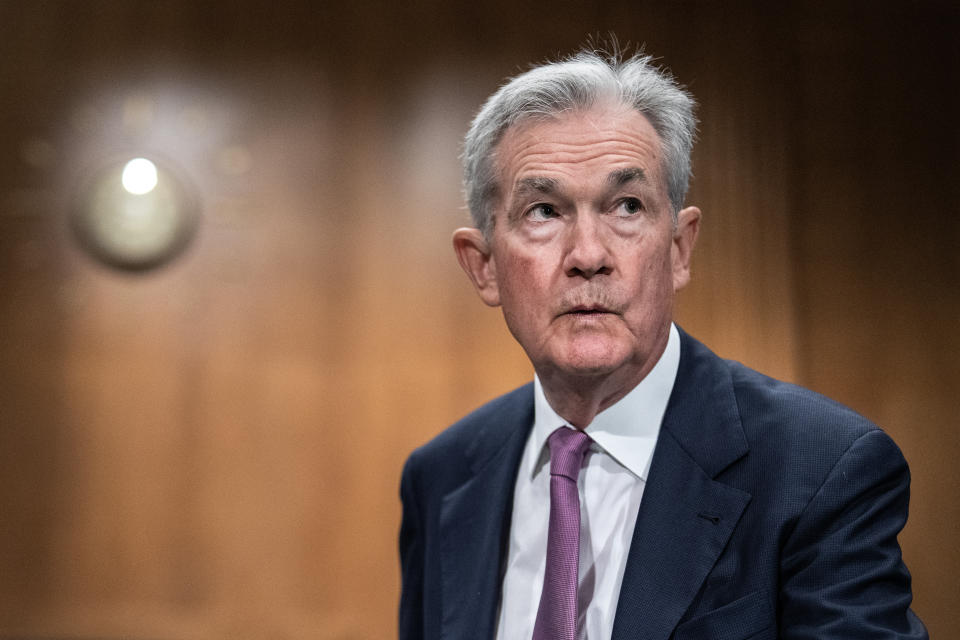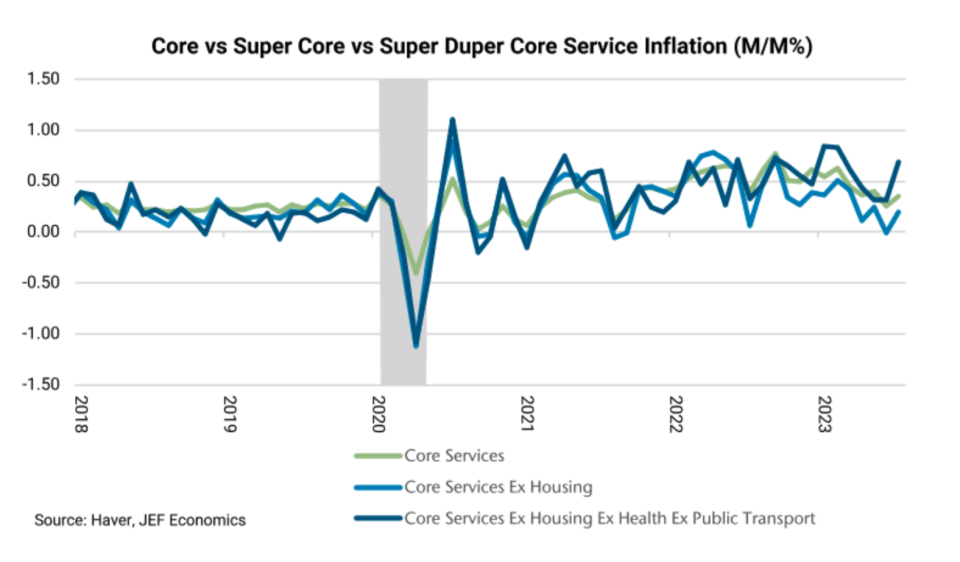
The 2023 economic story has centered around declining inflation coinciding with stronger than expected economic growth leading to the US skirting a recession. And this despite the economy navigating the highest interest rate environment in more than two decades.
But as we approach 2024, the stronger than expected consumer could prevent more good news on the inflation front and may influence how Federal Reserve Chair Jerome Powell frames the Fed’s fight against inflation during his speech on Friday in Jackson Hole, Wyoming.
“We think Powell’s tone at Jackson Hole will be less balanced than the July FOMC minutes since the latest data raise the risk of a fresh increase in inflation,” Bank of America US and global economist Shruti Mishra wrote in a note on Sunday.

Powell’s speech will come after another strong run of economic data showed consumer spending remained resilient in July. Economic growth in the third quarter is now tracking towards its fastest pace since the fourth quarter of 2021.
“We see building upside risks for goods prices more broadly as demand for goods is picking up again just as commodity prices have been rising, inventories appear to have reached a peak, and the disinflationary forces from supply chains correcting could be reaching an end,” Citi economist Veronica Clark wrote in a note on Monday.
The 0.7% uptick in retail sales in July — which included a 10.3% jump in nonstore retailer sales compared to last year — showed consumers are still spending on goods. Strength in goods consumption, economists at Citi argue, could introduce a greater possibility inflation reaccelerates.
There is also a more complicated narrative brewing below inflation’s headline decline over the past several months.
Headline inflation, as measured by the Consumer Price Index (CPI), increased 0.2% month-over-month in July. The same can be said for “core PCE”, which excludes the volatile food and energy categories.
Economists largely viewed this is a positive for the Fed as Core CPI’s increased at the slowest pace since October 2021.
But Jefferies US economist Thomas Simons argues that might not be showing the full picture.
Health care services and air fares have also proved extremely volatile in the post-pandemic economy, per Simons. When removing those metrics, Simons’ alternative gauge, “super duper core service inflation,” increased at a 0.7% rate in June, the biggest month-over-month increase since February.

“The Fed can exhale a little bit, and celebrate the strong disinflationary trend that has been in place since last Summer,” Simons wrote in a note to clients on August 11.
“However, it is still far too early for a victory lap, and this pressure in the super duper core measure of inflation will motivate the Fed to continue to keep rates high and give hawkish policy guidance.”
EY-Parthenon chief economist Gregory Daco recently pointed out in Yahoo Finance’s Chartbook that if stickiness like Simons’ highlights plays out and month-over-month inflation picks back up, inflation could end 2023 higher than it sits today.
“The ‘free disinflationary lunch’ from rapidly falling energy prices, cooling food price inflation and easing core goods inflation is now over and any additional disinflationary momentum will have to come from slower month-over-month gains in core services prices,” Daco said.
The labor market overahang
While the pandemic-era job market may no longer be booming, Americans are still seeing significant wage gains.
Wages are growing at a 4.4% pace from a year ago, above the headline inflation number of 3%, meaning “real” wages, or those adjusted for inflation, are now positive for the first time since March 2021.
And new data from a New York Fed survey released Monday showed the average wage workers are willing to leave a job for is now $78,645, an all-time high and up 8% from last year.
For Simons’ part, stubborn wage growth means, “We doubt that we will see much relief in [super duper core services inflation] prices until more slack develops in the labor market, and that doesn’t seem to be happening any time soon,” Simons wrote.
“Wages in excess of inflation means real wages are positive again,” Powell said during a press conference on July 26. “That’s a great thing. Of course, we want that. We want people to have real wages but we want wages to be going up at a level that’s consistent with 2 percent inflation over time…But I would say wages are probably an important issue, going forward.”
Elsewhere during his press conference, Powell reiterated his view that the labor market remains “very tight,” though suggested some signs of “better balance” in the US labor market are emerging.
“Labor market conditions broadly are going to be an important part of getting inflation back down and that’s why we think we need some further softening in labor market conditions,” Powell said.
Josh Schafer is a reporter for Yahoo Finance.
Read the latest financial and business news from Yahoo Finance






